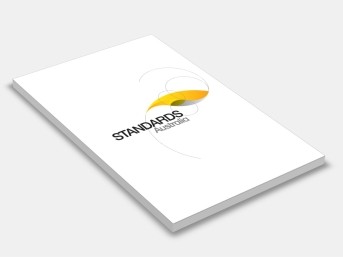AS 4678-2002 Earth-retaining structures
Standards Australia
Amended by: AS 4678-2002 AMDT 1 Earth-retaining structures
Amended by: AS 4678-2002 AMDT 2 Earth-retaining structures
This Standard incorporates Amendment No. 1 (July 2003) and Amendment No. 2 (August
2008). The changes required by the Amendment are indicated in the text by a marginal bar and amendment number against the clause, note, table, figure or part thereof affected.
The objective of this Standard is to provide designers of earth-retaining structures with
design criteria and guidance for use in design applications.
The terms ‘informative’ has been used in this Standard to define the application of the
appendix to which it applies. An ‘informative’ appendix is only for information and
guidance.
As far as practicable, this Standard has been made consistent with the approach taken in the
loading code for structures, AS 1170, Minimum design loads on structures. This enables the
Standard to be used in combination with structure design Standards such as AS 1720,
Timber Structures, AS 3600, Concrete Structures, AS 4100, Steel Structures, and AS 3700,
Masonry structures. Some specific applications are covered by other Standards and
documents. For example, HB 77, Australian Bridge Design Code, should be used to design
earth-retaining structures associated with road bridges.
First published as AS 4678-2002.
This Standard sets out requirements and recommendations relating to the design and
construction of structures required to retain soil, rock and other materials. It also includes
requirements and recommendations for the reinforcement of soil and rock materials.
This Standard does not prescribe specific methods of analysis.
NOTE: Various organizations and authorities may develop detailed guides and specifications
based on the principles set out in this Standard.
This Standard is in limit state format.
This Standard does not provide requirements and recommendations for ‘revetment type’
structures, which are sometimes used to retain soil, rock and other materials at slopes
steeper than that which the soil, rock or other material would naturally assume.
The retaining structures encompassed by this Standard are indicated in Figure 1.1.
Facings constructed up to 800 mm high in a Type 3 structure application are not covered by
this Standard.
Contents:
Section 1: Scope And General
Section 2: Investigating And Testing
Section 3: Design Requirements
Section 4: Design Loads
Section 5: Material Design Factors
Section 6: Construction
Section 7: Performance Monitoring
Appendix A: Structure Classification
Appendix B: Ground Anchors
Appendix C: Soil Nailing For Earth-Retaining Structures
Appendix D: Soil And Material Properties
Appendix E: Design Models And Methods
Appendix F: Material Selection And Durability
Appendix G: Drainage Of Earth-Retaining Structures
Appendix H: Reinforced Soil Facing System Connection Loads
Appendix I: Earthquake Design
Appendix J: Load Combinations
Appendix K: Partial Material Strength Factor Determination For Soil Reinforcement
Reinforced Soils And Retaining Structures.
CE-032
Association of Consulting Engineers, Australia; Australian Industry Group; Australian Geomechanics Society; AUSTROADS; Cement and Concrete Association of Australia; Concrete Institute of Australia; Concrete Masonry Association of Australia; Construction Industry Advisory Council; Institution of Engineers Australia; Master Builders Australia; University of New South Wales; University of Technology, Sydney.
